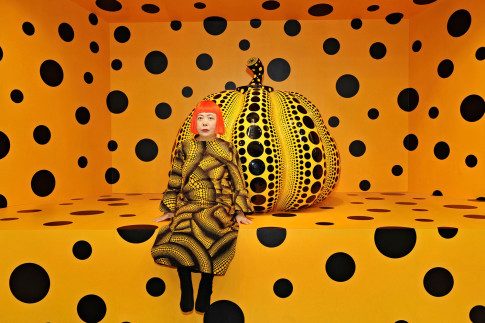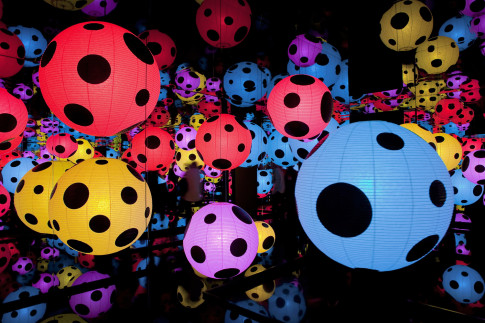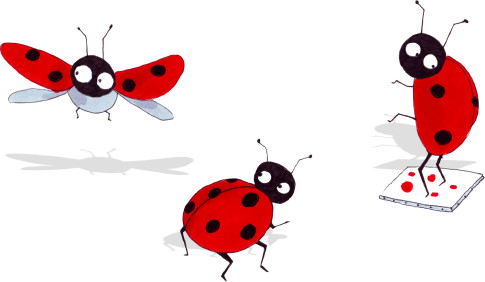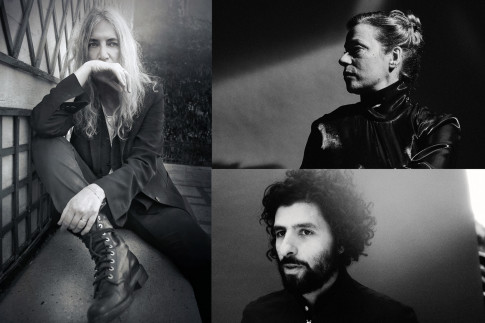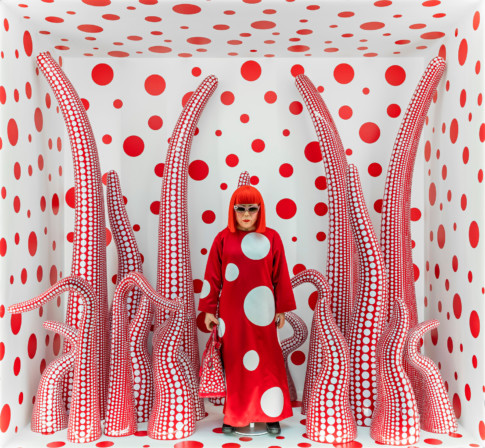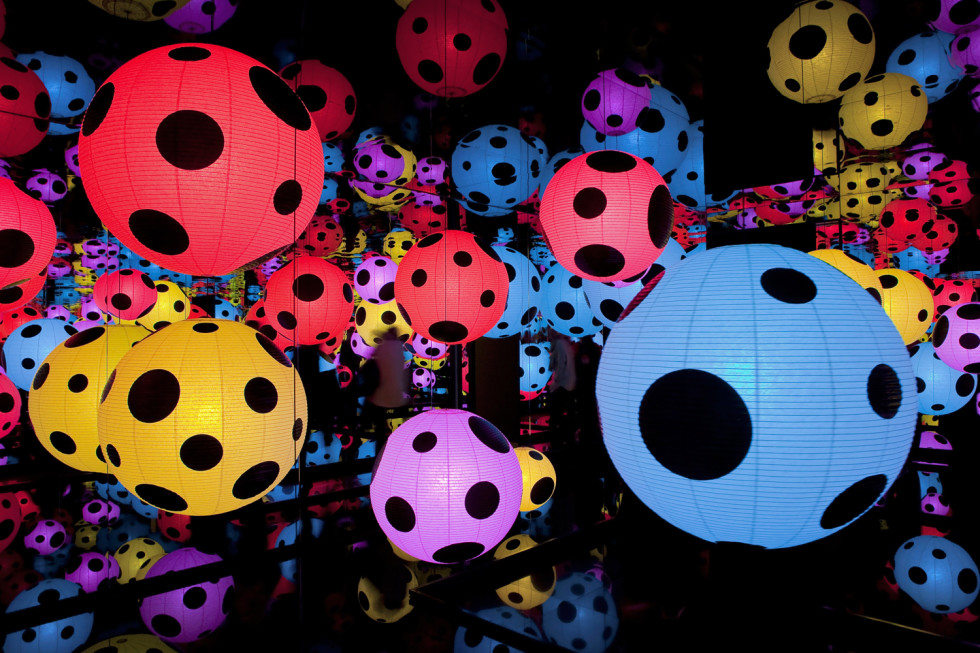
Yayoi Kusama, Infinity Mirrored Room - Hymn of Life, 2015 © Yayoi Kusama. Courtesy of Ota Fine Arts, Tokyo/Singapore, Victoria Miro Gallery, London and David Zwirner, New York. Photo: Vegard Kleven/HOK
About the artworks in the exhibition
Early works in Japan
Being close to nature has been vital to Kusama ever since her early childhood. Her family owned a plant nursery and classical plant studies were a natural first step for her in learning to draw.
Despite strong resistance from both her parents, Kusama chose to study art in Kyoto, and began by developing her skills in the traditional Japanese Nihonga technique. Eventually, she felt limited by the strict rules of the style and began experimenting with new materials and methods, producing hundreds of drawings and paintings. Surrealist traits appeared in her works, and although her motifs were linked to organic life, the shapes grew more abstract. Even in her youth, Kusama painted the networks of dots that eventually became a characteristic feature of her work.
When Kusama moved to the United States in 1957, she brought around two thousand paintings with her, to show and to sell as a means of income. She then burned the works she could not bring from her parents’ home in Matsumoto, to start from scratch in New York.
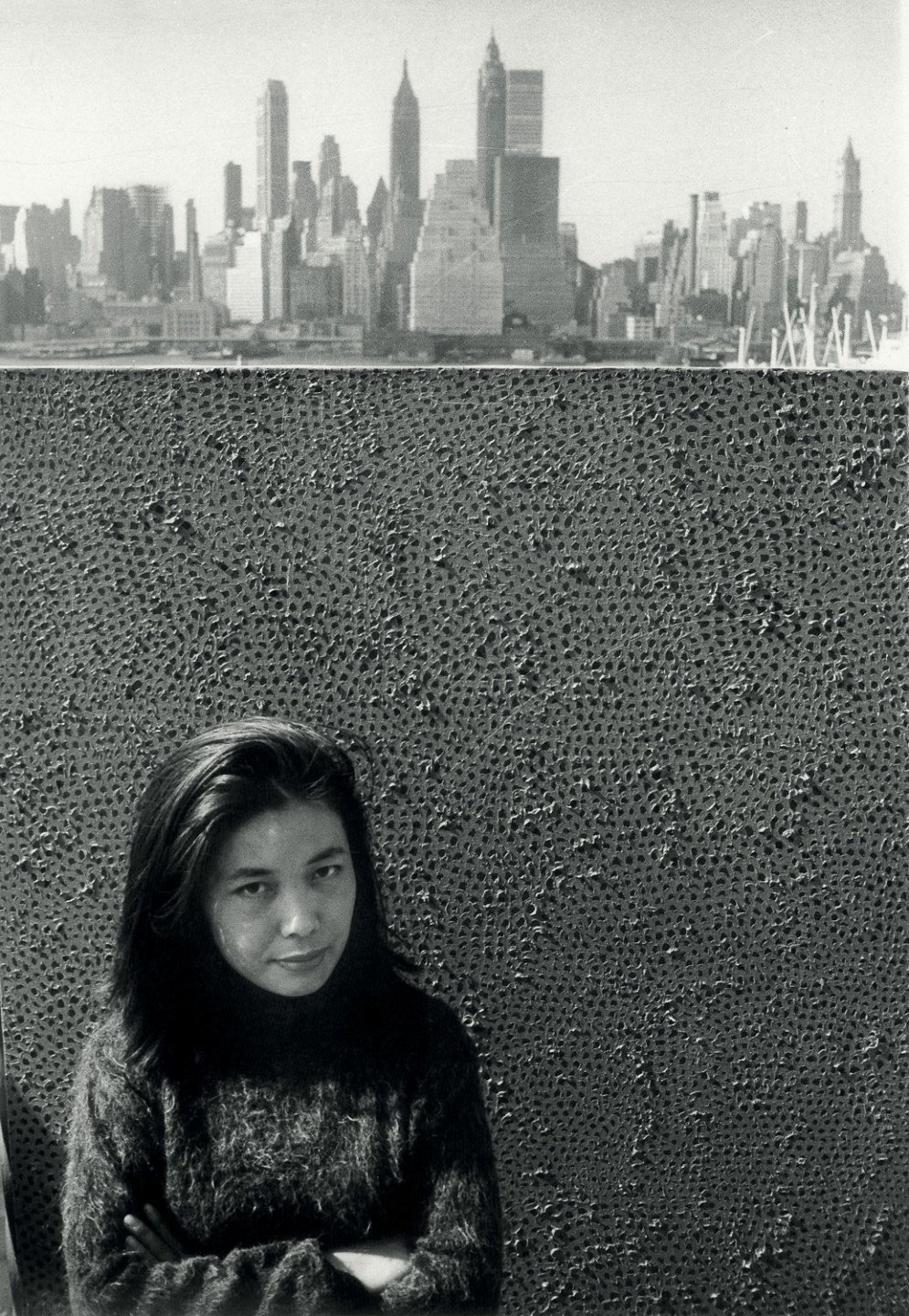
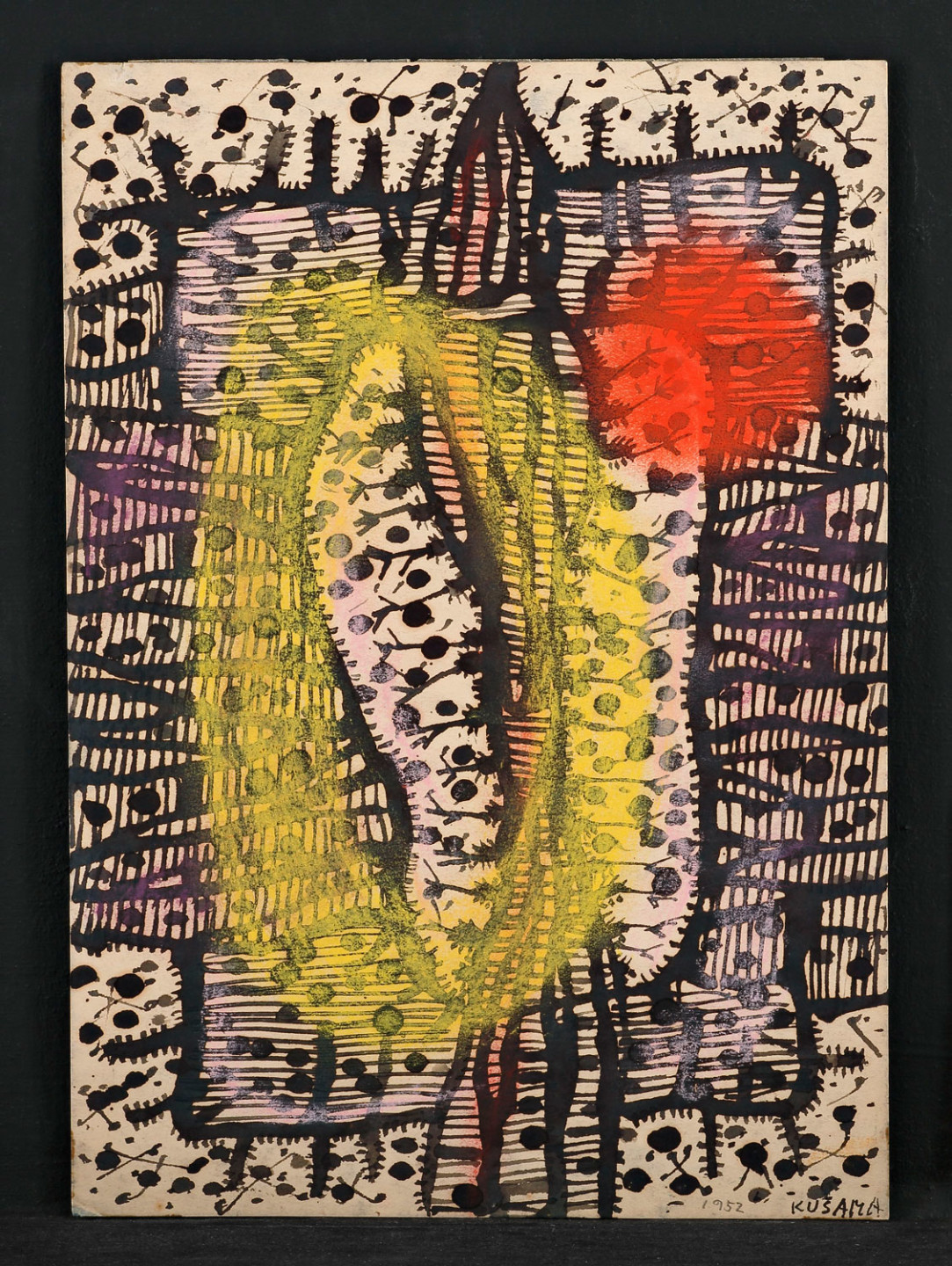
Infinity
In New York, Kusama embarked on a series of new paintings that differed greatly in both size and style from the dark, intimate paintings she had created in Japan. Methodically, she covered large canvases with semi-circles in white, impasto oil paint, like the mesh of an infinite net. Over this, she applied a thin layer of white wash, making the dark background paler, as though it were shrouded by mist. The process was time-consuming and required a keen awareness and endurance.
The cool, monochrome Infinity Nets paintings were enthusiastically received in New York, where the art scene was dominated by painters such as Jackson Pollock and Willem de Kooning. Both were exponents of abstract expressionism, with dramatic gestures and powerful expressiveness wholly unlike Kusama’s paintings, which were exercises in self-restraint. Her endless repetitions of one and the same gesture in these works are enough to make anyone light-headed. At once both tangible and lyrical, they have an energy that comes from the charged concentrated effort Kusama has put into each painting.
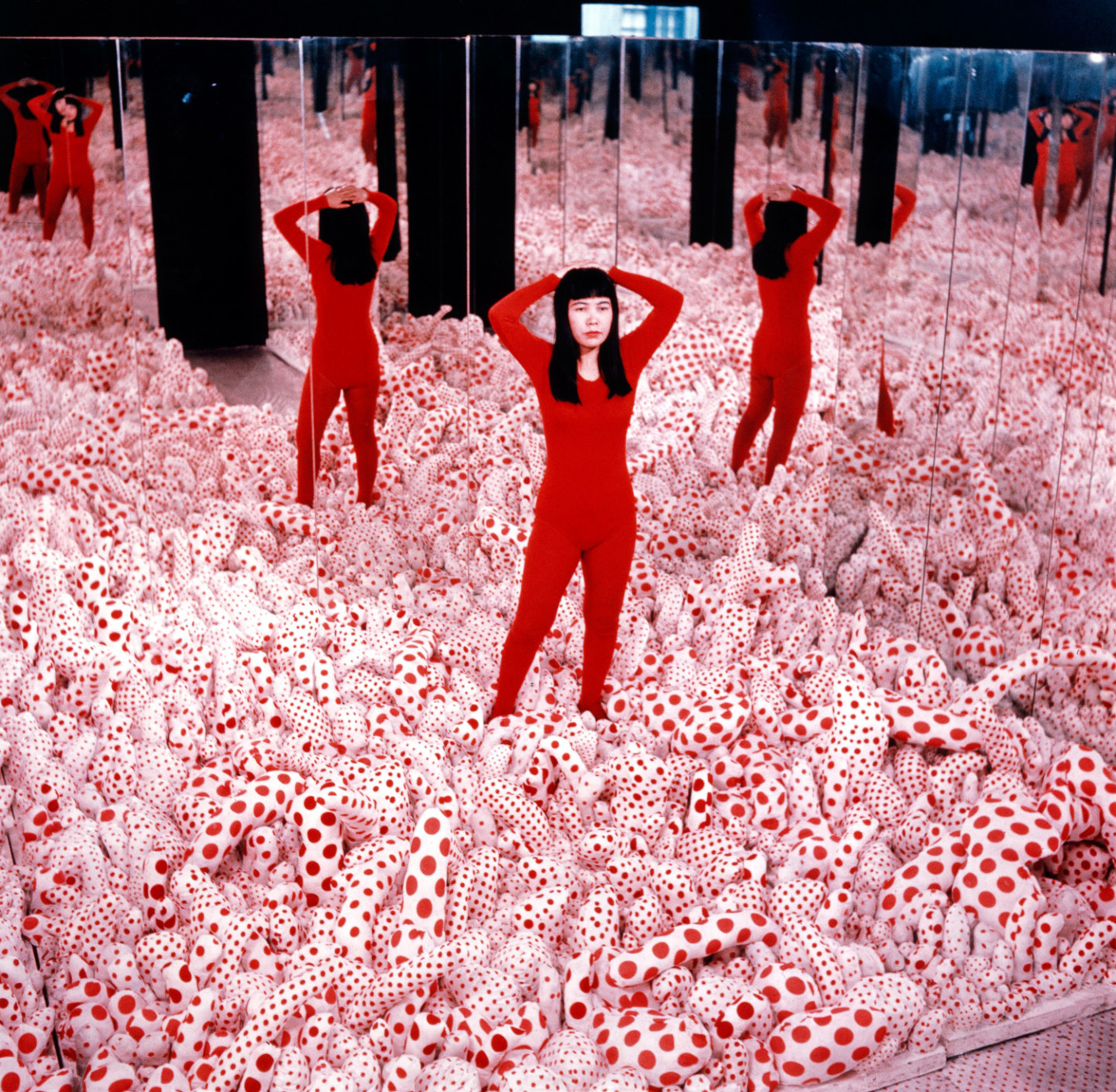
Phallic fields
In the series Accumulation Sculptures from 1961–65, ordinary objects are overgrown with stuffed textile protuberances. Kusama brought tables, chairs and suitcases she found in the streets, to her studio, where she covered them with hand-stitched phallus shapes, which she then covered with thick coats of white paint. Presented together, the sculptures form a sexualised scene where the male organ penetrates every cranny, crevice and aspect of everyday life.
Gradually, the intrusive shapes started climbing up the walls and eventually infested entire rooms. In Infinity Mirror Room – Phalli’s Field (Floor Show), Kusama’s first mirror installation, the room is covered with mirrors that reflect and multiply the many soft shapes into an endless field of phalluses. Kusama has always been open about her tense relationship to sexuality: “People often assume that I must be mad about sex, because I make so many such objects, but that’s a complete misunderstanding. It’s quite the opposite – I make the objects because they horrify me.”
Kusama as a work of art
The late 1960s were an intensely creative period for Kusama, and her artistic activities expanded to breaking point. She began incorporating not just her inner experiences but also her actual person in her works. Famous photographers were commissioned to make portraits, and Kusama would habitually pose in front of her works, often wearing clothes that matched the artwork. What started as a way of promoting her art soon became a part of her practice.
Just as Andy Warhol at the time, Kusama was a master of marketing her persona in images, press releases and manifestoes. And yet, Kusama was fully aware that she was an outsider, as a woman and a non-Westerner, two roles she emphasised and played with. In Self-Obliteration she painted over the picture of herself with dots, until she became one with the work of art. In other collages, she had herself portrayed as an American pinup or an Alice in Wonderland, in the cluttered Manhattan studio.
Happenings and bodies
From the mid-1960s until the early 1970s, Kusama organised collective art happenings on the themes of political protest and sexual liberation. One of these was Anatomic Explosions. She staged happenings on Wall Street, by the Statue of Liberty, in Central Park, and other strategic places in New York. The participants wore clothes designed by Kusama, and sometimes they removed their clothes, in protest against the establishment. In Body Paint Festivals she painted polka dots on nude bodies and appointed herself the “Priestess of Polka Dots”.
The clothes Kusama designed are an important part of her art activism. Her design is a social commentary, and aimed at promoting gender equality and a morenatural attitude to the body. Protests against the Vietnam War, the uniformity brought about by capitalist culture, and Kusama’s affinity with psychedelia, the hippie and civil rights movements, all contributed to the political dimension of her art at this time.
Kusama Enterprise
Kusama’s designs were sold in her own shop from 1969 and onwards under the brand name The Nude Fashion Company, a collection of clothing with strategically placed holes to expose intimate parts of the body. The same year, she launched the company Kusama Enterprise to organise her art activities, and began distancing herself from the conventional art scene. She produced tunics in her unmistakable polka dot print, infinity patterns and orgy dresses for collective activities.
Fashion shows were often held in her studio, where her paintings and sculptures served as stage sets and props. The unique pieces were sewn and painted by hand, and press releases advertised the garments as alternatives to the artificial and industrialised culture. The same year, she started the magazine Kusama’s Orgy, which was immediately x-rated due to its explicit content.
Kusama has never acknowledged any sharp boundaries between art, design and fashion. Together with the Japanese design collective graf, she created a new collection in 2000, based on patterns used in previous works. One of the more striking collaborations is the collection she made for Louis Vuitton in 2012, together with designer Marc Jacobs.
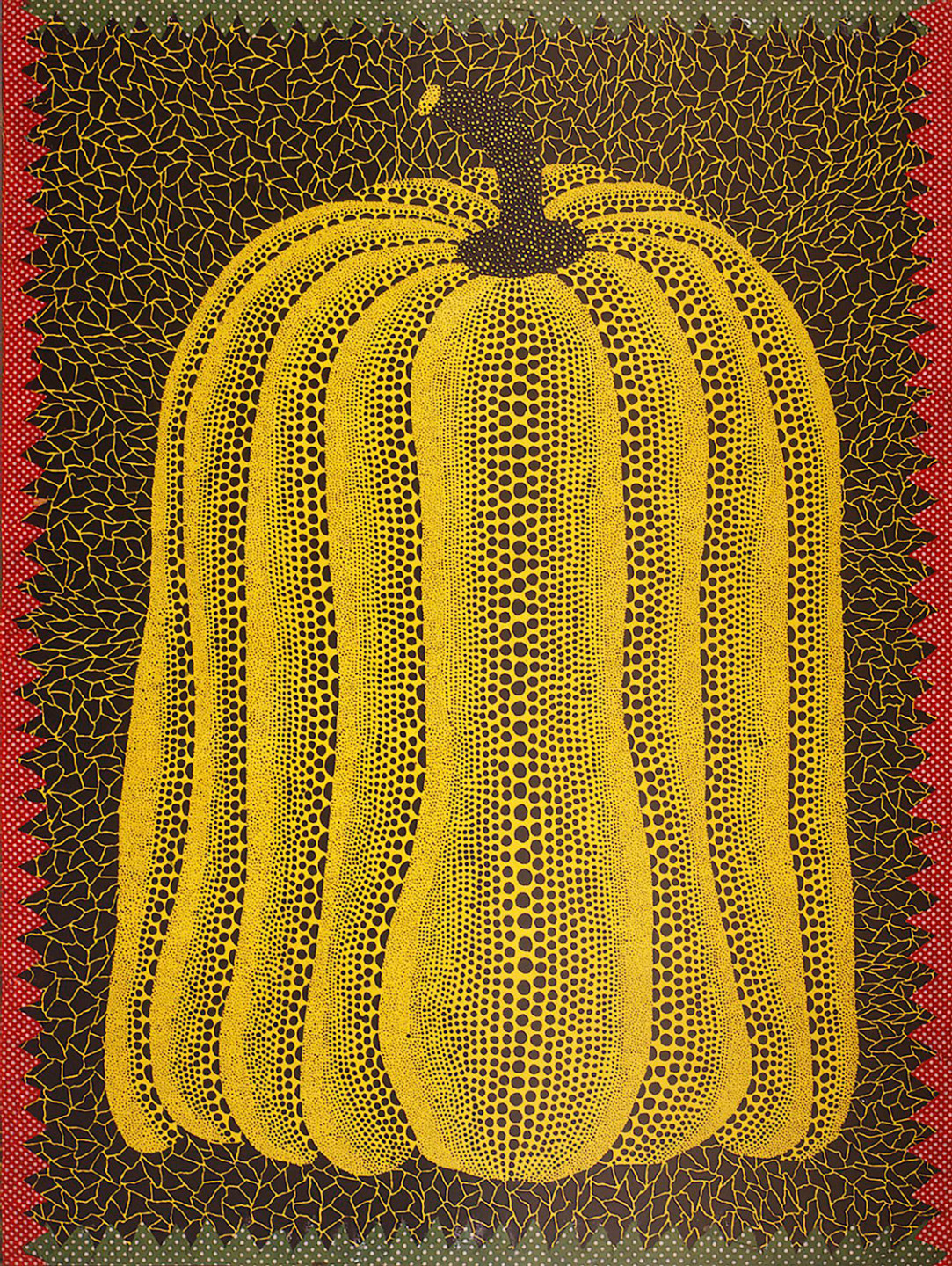
1980s in Tokyo
After an absence of more than 20 years from the art scene in Japan, Kusama began exhibiting again in Tokyo in the early 1980s. She had not yet become nationally famous when she moved to the United States in 1957, and the pieces she created in the 1980s were the Japanese audience’s first more comprehensive encounter with her output. By that time it included paintings, sculptures, large installations and performance works as well as fiction and poetry.
In her monumental acrylic paintings, Kusama revisited the polka dots and nets that had been a leitmotif throughout her artistic career, but now they appeared in stronger colours and even more stylised patterns. The yellow pumpkin became a typical object in Kusama’s imagery during this period. Her fascination for pumpkins relates to its human features and unpretentious appearance, she explains. Kusama considers it to possess an almost magical power, as it can sprout and grow even in the most unfavourable conditions.
Hymn of life
Infinity Mirrored Room – Hymn of Life is Kusama’s most recent work, and it is shown to the public for the first time on this exhibition tour. The installation is one of the mirrored rooms Kusama has been working on since 1965. Earlier works in this series have included a sea of phalluses and a universe of diodes. Standing inside these works, the boundaries of the surrounding room seem to dissolve. It is hard to find our bearings, and it feels like being in a world where everything is floating.
In Hymn of Life, we are guided through the space by a narrow walkway, spheres are reflected by the walls and the water below. The mirror-covered room is filled with lights made of brittle rice paper which slowly change colour and evoke a sense of unfathomable space. Unlike some of her earlier mirror room installations, which could be experienced as invasive, these gently shifting light orbs suggest a peaceful universe.
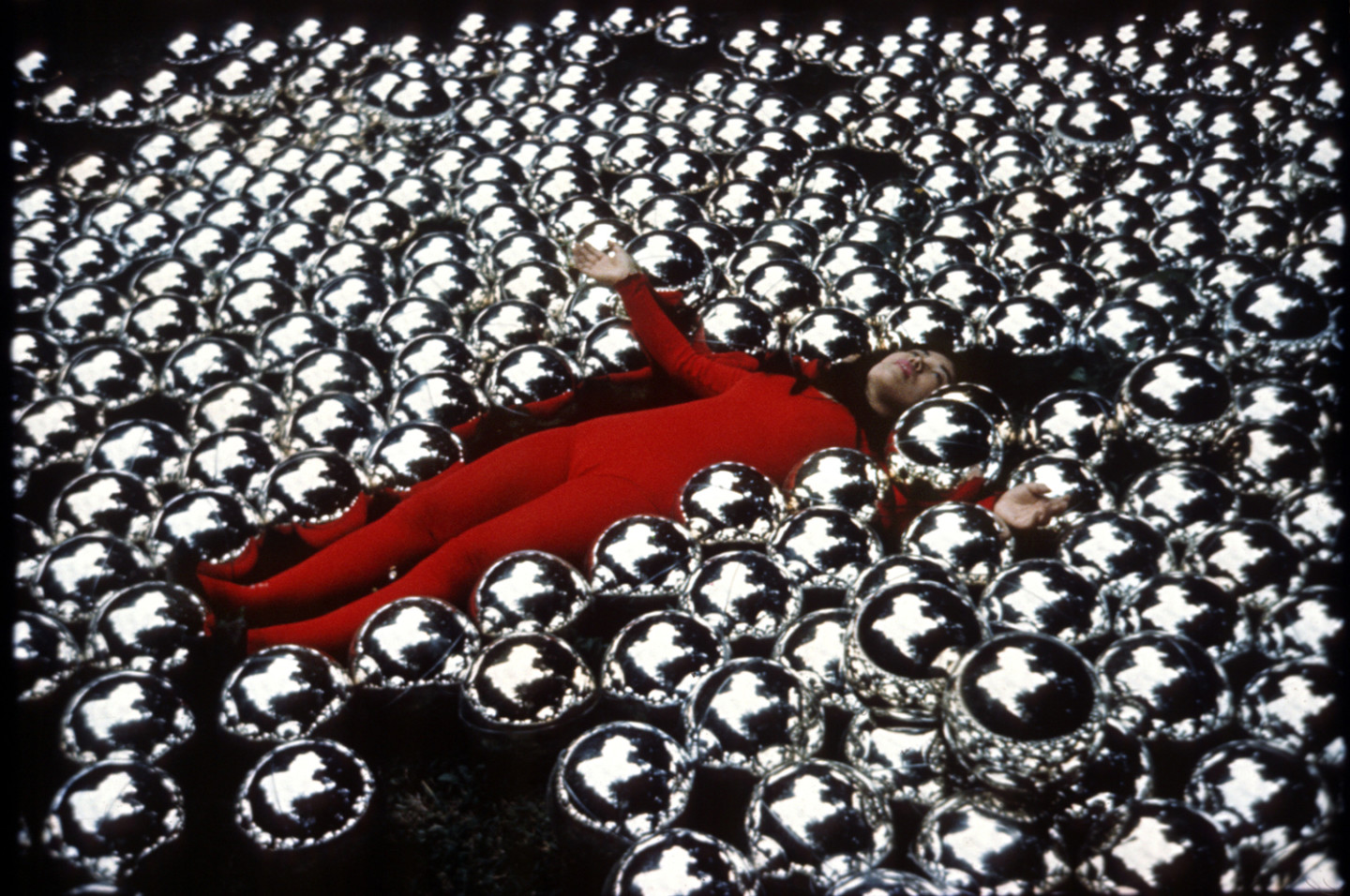
Narcissus Garden
Narcissus Garden is one of Kusama’s most well-known works. Initially mounted in 1966 for the Venice Biennale, it was a scandalous success. According to her autobiography, she was not officially invited to participate but was supported by the Italian artist Lucio Fontana and the chairman of the Biennale committee, who wanted her to stage her installation comprising 1,500 shimmering balls on the lawn outside the Italian Pavilion. Kusama called her installation a“kinetic carpet”. The highly polished surfaces reflecteda distorted version of the artist, the visitors, the architecture and the surrounding landscape.
As soon as the work had been installed, Kusama started selling the balls to visitors for two dollars each, with a sign in the middle of the installation saying “your narcisium for sale”. But the organisers soon put a stop to this. The action has later been acknowledged for the way it highlights how artists are marketed in the media, but it was also a critique of the art market and its commodification of art.

